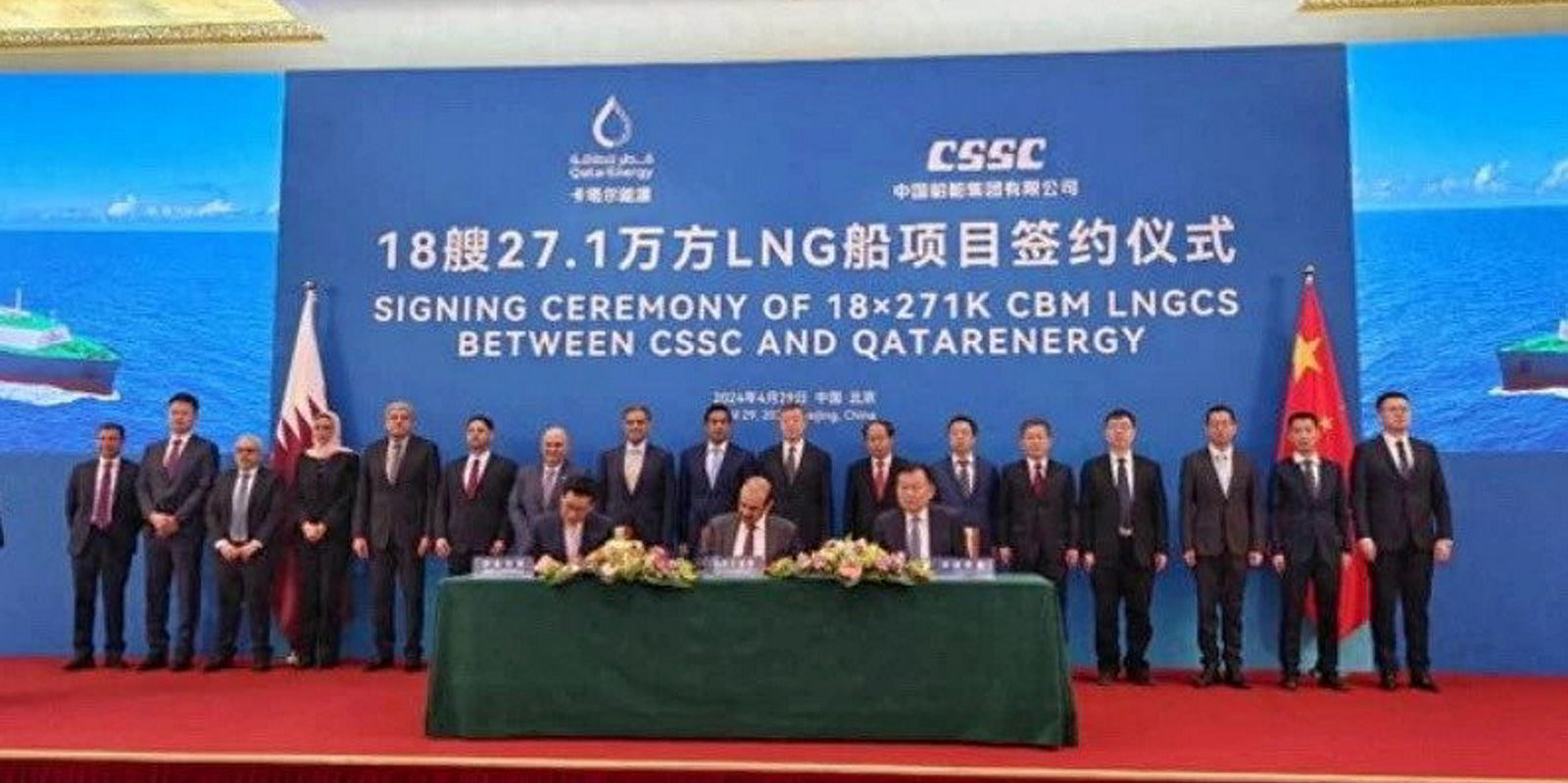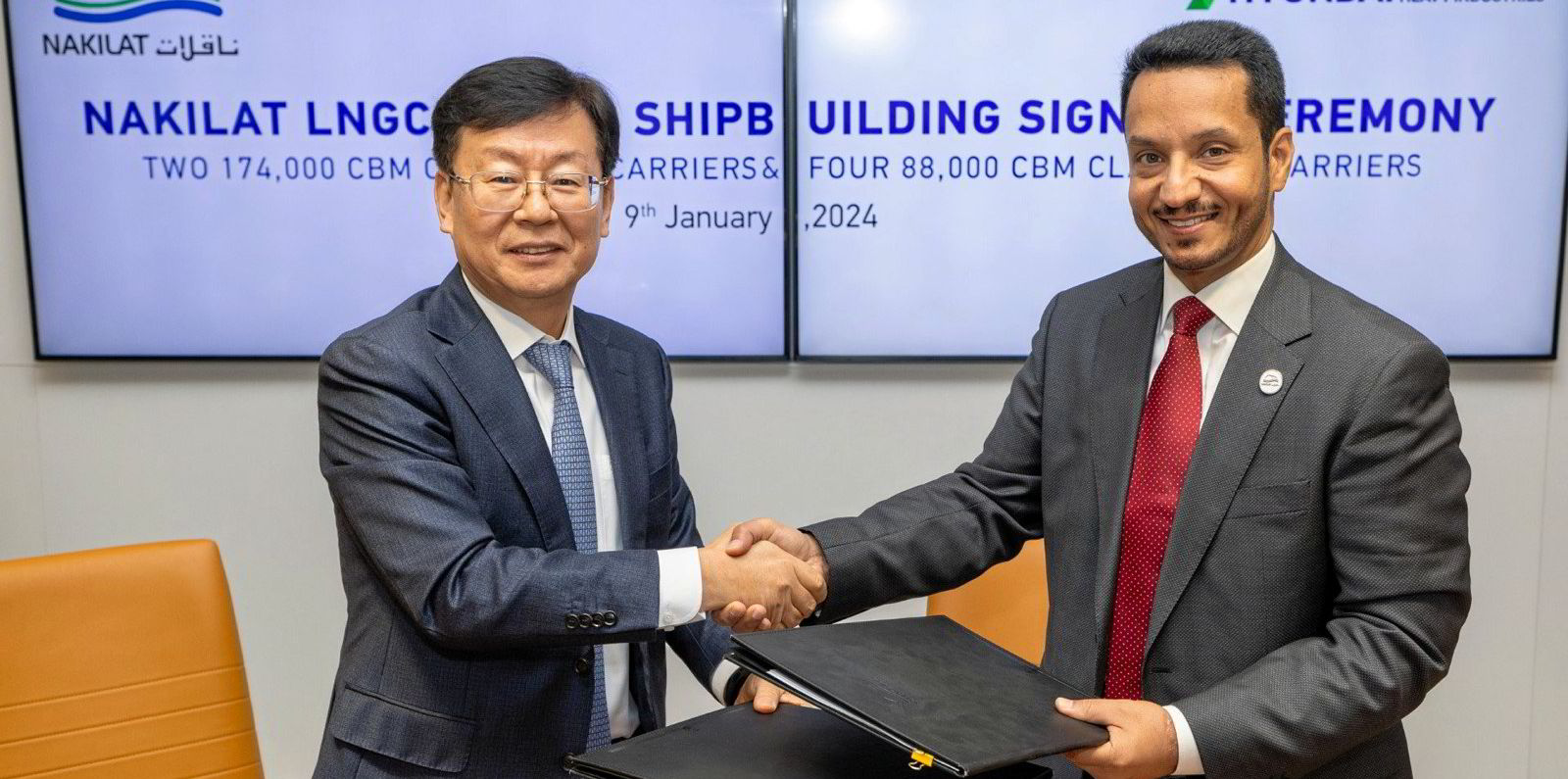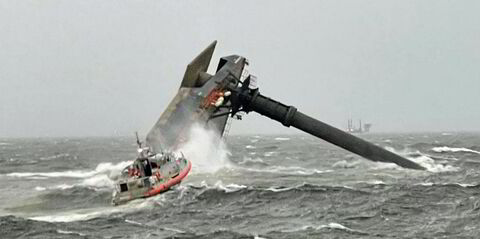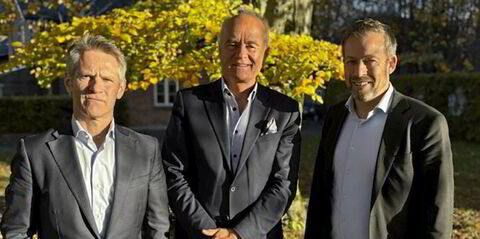Middle East LNG producer QatarEnergy has inked contracts with shipbuilders and owners to bring the total number of LNG newbuildings it has agreed to take on long-term charter under both phases of its huge ship programme to a colossal 122 vessels worth close to $30bn.
QatarEnergy signed up to 60 vessels in Phase 1, which concluded in 2022, and has to date inked deals on a further 62 ships under its ongoing Phase 2 programme in what must rank as the largest multi-vessel shipbuilding project undertaken.
It is not clear if the LNG-producing giant is entirely finished booking the LNG vessels it needs for its liquefaction expansion and fleet renewal efforts.
Some parties close to the business have indicated that talks remain in play at one, and possibly a second, shipbuilder in South Korea for Q-Max-plus capacity vessels.
Announcing a slew of signings over the past few days, QatarEnergy finally concluded deals on a much talked up 18 supersize vessels worth $6bn in total that will form the next generation of Q-Max capacity vessels for the Qatari giant.
The 271,000-cbm vessels — which the company is calling its Qatar-China-Max or QC-Max LNG ships — will be built by Hudong-Zhonghua Shipbuilding (Group).
They are priced in the region of $333m each and will push delivery dates for these vessels at the Shanghai-based yard into 2031, meaning the latest will deliver seven years from now.
QatarEnergy said it has inked long-term charterparty agreements with three Chinese shipowners for nine of these 18 vessels.
China Merchants Energy Shipping will build four, Shandong Marine Energy three and China LNG Shipping (Holdings) the remaining two.
Qatar’s minister of state for energy affairs, Saad Sherida Al-Kaabi, who is also president and chief executive of QatarEnergy, signed deals with the heads of all three companies — CMES president Wang Yongxin, Shandong Marine chairman Li Maozhong and China LNG general manager Cong Jian — in Beijing on Monday.
Al-Kaabi said: “These nine vessels are part of QatarEnergy’s historic programme to support our expanded LNG production capacity from the North Field, which will reach 142 million tons per annum by 2030, and which will also help meet our long-term fleet replacement requirements.”
Qatari shipowner Nakilat is expected to take on the other nine QC-Max vessels at Hudong-Zhonghua.
These, along with the 25 LNG newbuildings at two South Korean shipyards under Phase 2 of the programme and two vessels contracted in January for its own account, will tip Nakilat’s LNG fleet over the 100 mark to 105 vessels.
Change of tack
The two phases of QatarEnergy’s LNG shipbuilding programme differ quite markedly.
Under Phase 1, a mix of 12 different shipowners were assigned to the vessels including several independents, a large investor and key names from Japan and South Korea. Nakilat was not selected, there was only one Chinese name in the line-up and all the vessels were ships of 174,000 cbm.
Under Phase 2, Nakilat looks set to walk away with at least 34 ships — over half the orders placed to date in the second phase of ship procurement.
Chinese owners are also the other big participants, which observers said should come as no surprise since QatarEnergy has signed several long-term LNG sales deals with China, which usually insists on having a stake in the ship construction and shipping for these volumes.
QatarEnergy underwent a series of price renegotiations with its four chosen shipbuilders — one Chinese and three South Korean — since it first concluded its LNG berth reservation deals for just over 150 LNG slots in April and June 2020.
Price renegotiations
At that time, prices had been rising from $185m into the low-$190m range. The first batch of vessels in Phase 1 are believed to have been agreed at levels around $215m but this was hiked to $230m for the later vessels.
Today, brokers are quoting LNG carrier newbuilding prices at $260m.





